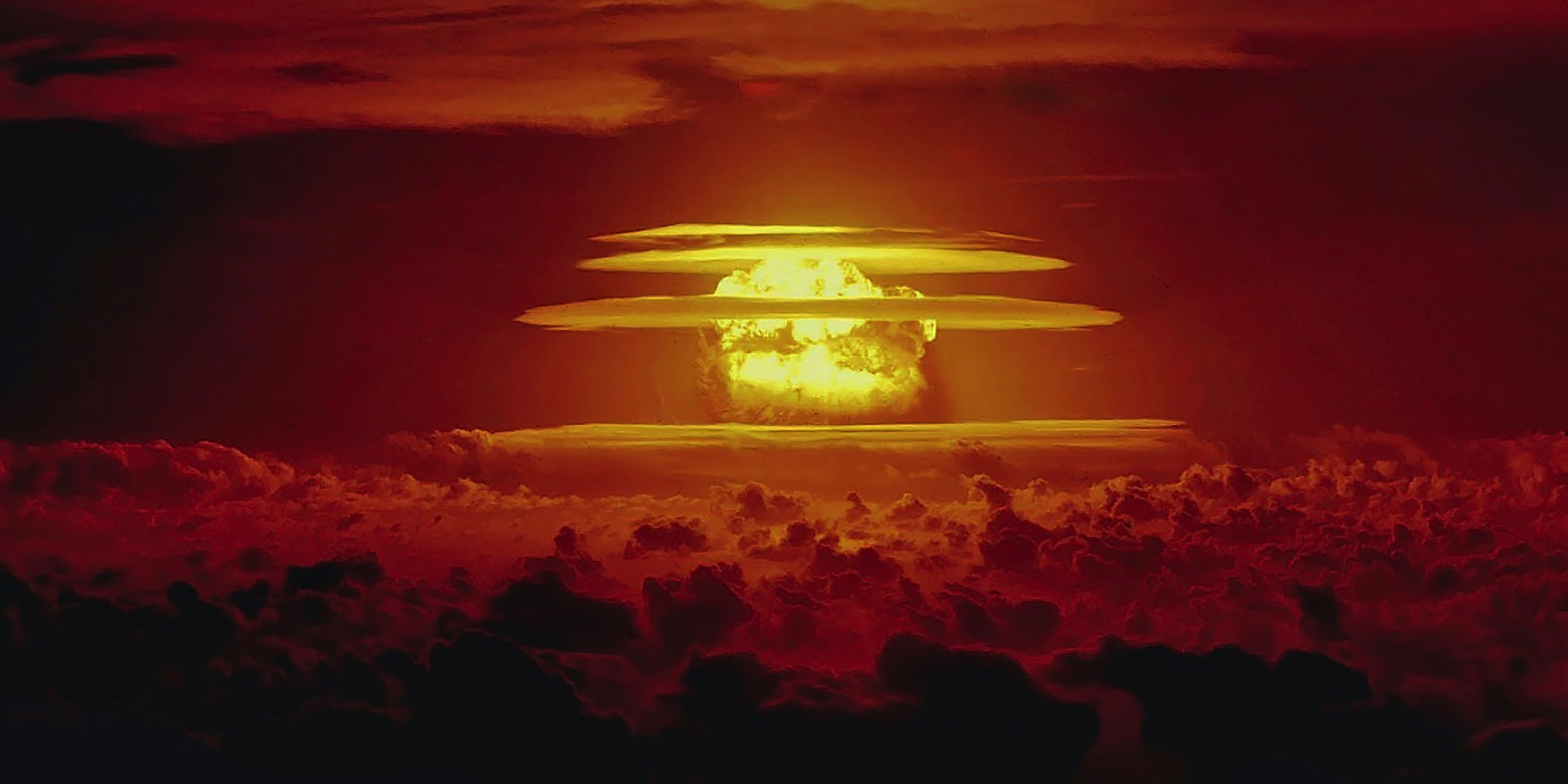Originally published 1 April 1991
Rumors have been flying that paleontologist Robert (Ace) Hayprel has found dinosaur fossils that will revolutionize our views about how those creatures became extinct 65 million years ago.
Hayprel is an iconoclastic bone-digger from the University of Southern Montana who several times before has rattled established views about dinosaurs. It was Hayprel, for instance, who uncovered evidence that the supposedly ferocious Tyrannosaurus rex was actually a gentle, fun-loving herbivore that just happened to have an ugly mug.
I gave Hayprel a call at the university. He kindly consented to a telephone interview. I put the question to him straight: “I take it you reject the theory that dinosaurs were wiped out when an asteroid collided with the Earth?”
“Hogwash!” snapped Hayprel. “The dinosaurs were no more blasted by an asteroid than I was. Volcanic eruptions didn’t finish them off either. The dinosaurs blew themselves out of existence.”
“You mean…”
“Exactly! A nuclear holocaust. Bombs away. They blew themselves to kingdom come, and a lot of other species with ’em.”
“But that implies that dinosaurs were…”
“Intelligent? You bet. Civilized too, if you can call a creature that blows itself up intelligent or civilized. And I can prove it.”
“How?”
“Fossils, of course.”
“Would you care to fill me in.”
“You’ve undoubtedly heard about Stenonychosaurus, a small dinosaur that lived near the end of the Cretaceous period of geologic history, just before the final dinosaur extinctions? Since the 1960s we’ve known that Stenonychosaurus had opposable hand digits and bipedal posture. And a fair sized brain, too. Many attributes, in fact, not unlike our humanoid ancestors of only a few million years ago. Lots of people have suggested that Stenonychosaurus might have achieved true intelligence if the dinosaurs hadn’t become extinct. Well, I’m here to tell you that it happened.
“And that’s where the new fossils come in?”
“You’ve got it. Quite remarkable fossils, from directly below the Cretaceous-Tertiary boundary clay…”
“You’re referring to the worldwide layer of clay and soot in the rock strata that defines the end of the Cretaceous period and the beginning of the Tertiary, supposedly deposited by an asteroid impact that wiped out the dinosaurs?”
“Yep. My fossils are from mudstones even more fine-grained than the famous German limestones that show every feather of Archeopteryx, the first bird. What I’m seeing are incredibly detailed fossils — including skin impressions! — of an animal not unlike Stenonychosaurus, but with a greatly enlarged cranial capacity. And brain size is not the only reason I know this new species was intelligent.”
“What else?”
“Pockets! This dinosaur had evolved pockets in its skin. Now you tell me what survival value pockets would have to an unintelligent creature.”
“Kangaroos and other marsupials have pouches for carrying their immature young, and they have nothing like human levels of intelligence.”
“Ha! But dinosaurs were egg-layers, so no need for reproductive pouches. Besides, my dinosaur pockets are precisely placed in the dinosaur’s hide to be accessible to the fore extremities. I’ve made the measurements and calculations. Perfect for car keys, lipsticks, loose change. I call the new species Sacculusaurus; that’s Latin, more or less, for “pocket-lizard.”
“But if dinosaurs reached our level of intelligence and civilization, then how come we haven’t found more evidence buried in the rocks? Cities? Highways?”
“A reasonable question. But remember, humans have been significantly modifying the environment for only a few thousand years — a blink of an eye in geologic time — and when you look at the whole planet, only a tiny fraction of its surface is covered by human artifacts. The chance of finding remnants of dinosaur civilization is about the same as opening the Encyclopedia Britannica at random and hitting the page for — Oh, you get the idea. I was damn lucky to find a few individuals.”
“And the dinosaur extinctions?”
“It’s all there in the stratum of clay that marks the Cretaceous-Tertiary boundary. You’ve heard about the iridium, an element that’s abundant in the boundary clay but rare elsewhere on the surface of the Earth? Yes, I’ll admit that iridium is common in meteorites, but it’s also a fallout product of plutonium bombs. I say the clay is composed of dust blasted into the atmosphere by a nuclear war. And the soot is from war-ignited fires. All of that stuff settled onto the surface of the Earth, along with the iridium, and in a few places those deposits have been preserved for our inspection.
“Incredible!”
“It’s the nuclear winter scenario, exactly! Sacculusaurus was intelligent enough to build bombs, but not bright enough to refrain from using them. A little intraspecies strife. Ka-blooey! No Sacculusaurus. No dinosaurs. No…”
“What next?”
“We’ve got to find more places where the Cretaceous-Tertiary boundary is revealed in the strata. Sooner or later, just below the clay, soot, and iridium we’ll find the smoking gun, the unmistakable fossil artifact of intelligent civilization. Perhaps a Sacculusaurus vehicle, or a dwelling. Or a Sacculusaurus with something in its pockets, the dinosaur equivalent of a Swiss Army knife, perhaps, or bus fare. I’ve just scratched the surface. My discovery is just the beginning. Soon, Sacculusaurus will be a household word.”
Hayprel fools himself if he expects quick acceptance for his theory of the dinosaur extinctions. Nevertheless, his remarkably-detailed “pocket-lizard” fossils are convincing evidence of the perils of intelligence.
This essay was originally published on April Fools’ Day, 1991. ‑Ed.




Raymo’s amusing and highly entertaining little essays are certainly gems worth preserving. Very pleased to have wandered in from the cold to find them quite unexpectedly. I am familiar with some of his writings, including similar essays in his book The Soul of the Night and a much useful book: 365 Starry Nights, both holding honored spots on the least dusty shelves of my tiny library.
Thanks to this clever and delightful little snippet I’ll never look at dry, dusty fossils with the same jaundiced eye again!